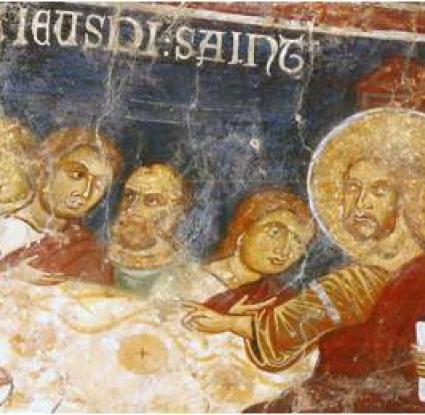
«Λεπτομέρεια του Μυστικού Δείπνου, αρχές 14ου αι., "Βασιλικό Παρεκκλήσι" στα Πυργά. Μπροστά στον Ιησού διακρίνονται ψωμιά σφαιρικού σχήματος» Πηγή: Wollesen J.T. (2010), Patrons and Patrons on Cyprus: The Frescoes in the Royal Chapel at Pyrga, Έγχρ. Πίνακας 4,176. Toronto: Pontifical Institute of Medieval Studies.

Accompanying dish after a meal.
Name - Origin
The Byzantines used to eat cheese, fresh or dry, along with bread, as a prosfagin. Fish, meat, pulses and cheese can be considered as prosfaïn, but the Byzantines usually served cheese. In addition to cheese, the Byzantines used to eat bread, white olives or 'kolymvades' (Koukoules 1952, 31-34).
Additional information and bibliography
Koukoules F. (1952), Βυζαντινών βίος και πολιτισμός, τ.E, Papazisi Publications, Athens.
Athanasios Vionis, Argyro Xenophontos